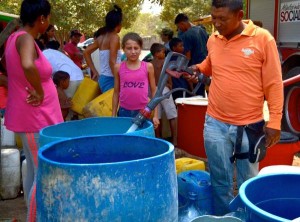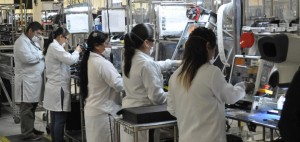By Luisa Cristini, PhD.
Hawaii Hispanic News
HONOULU, Hawaii — Water is life. The development of both animal species and human society worldwide has always followed water resources. We need water for our fundamental needs and to maintain high living standards. But water is also the basis of Earth’s fragile ecosystem. These reasons make water unique among our planet’s natural resources.
Nowadays, water resources are under many pressures of both natural and human origins. To assess the state of worldwide water resources, in 2009 the United Nations Environmental, Scientific and Cultural Organization (UNESCO) released its third report on world water development: Water in a Changing World. This important document was designed to: 1) inform the worldwide community – in particular decision-makers – about the risks to this precious resource; and 2) to suggest effective water-management practices.
Freshwater on Earth is finite and distributed on the planet through the hydrological (water) cycle. This cycle is composed of rainfall, evaporation, groundwater and storage. It includes water in all its three physical states: liquid, solid and gas. The components of the water cycle all differ in their chemical and biochemical properties: i.e. dissolved
chemicals and nutrients, oxygen levels; spatial and temporal variability (e.g., seasonal variations); and resilience and
vulnerability to pressures (e.g., how quickly pollutants are removed). This makes the water cycle very sensitive to various changes-including land use, climate change and pollution.
Throughout Earth’s history the hydrological cycle has been changing due to natural cycles. In the last couple of centuries, however, continuing human activities have become the primary “drivers” of stress and change in the water system. These pressures are generally related to human development and economic growth.
For many years groundwater resources have been heavily used for agriculture and human supply. Now all industries make use of large amounts of water in the production of goods and services, including energy. Through impacts on both quality (i.e., water contamination) and quantity (i.e., water supply), human activities have interfered with the role of water as prime environmental agent.
In some areas of the world, pollution of economically important river basins and aquifers has reached, or exceeded, the
point of no-return. In those areas a future without secure water resources is now a real possibility. Additionally, water is linked to the crises of energy, food and climate change.
As the Intergovernmental Panel for Climate Change (IPCC) assessed in its fourth report published in 2007, the global climate is changing and there is strong evidence that the change is human-induced.
Climate scientists agree that current and future global warming will result in an intensification, acceleration, or enhancement of the hydrological cycle and observations indicate that this is already happening. Human-induced climate change is expected to have substantial effects on energy flows and matter recycling through its impact on water temperature. This would result in algal blooms, increases in toxic bacteria and reduction in biodiversity. Waterrelated
hazards for both humans and environment can result from too much water (i.e., floods, erosion, landslides, etc.) or too little (i.e., droughts and loss of wetlands or habitat) and from the effects of chemical and biological pollution on
water quality and in-stream ecosystems.
Nevertheless, the natural variability of water resources can provide opportunities for management strategies to respond to potential climate change threats. Research and innovation are critical to develop appropriate adaptation strategies.
Effective management of water resources requires reliable information on the state of the resource and how it is responding to external drivers such as climate change and water and land use. This information can be achieved by increasing the data network and a more efficient use of existing data, including ground-based observations and satellite data.
Strengthening organizational structures, improving the operating efficiency of water supply utilities and cooperation between governmental and non-governmental entities will help to improve water resources management and service quality.
Solutions to current issues and future challenges are possible by implementing more resource-sustainable policies and practices.
Luisa Cristini, PhD. is based at the University of Hawaii at Manoa where she studies climate dynamics and change, as well as, climate policy.





